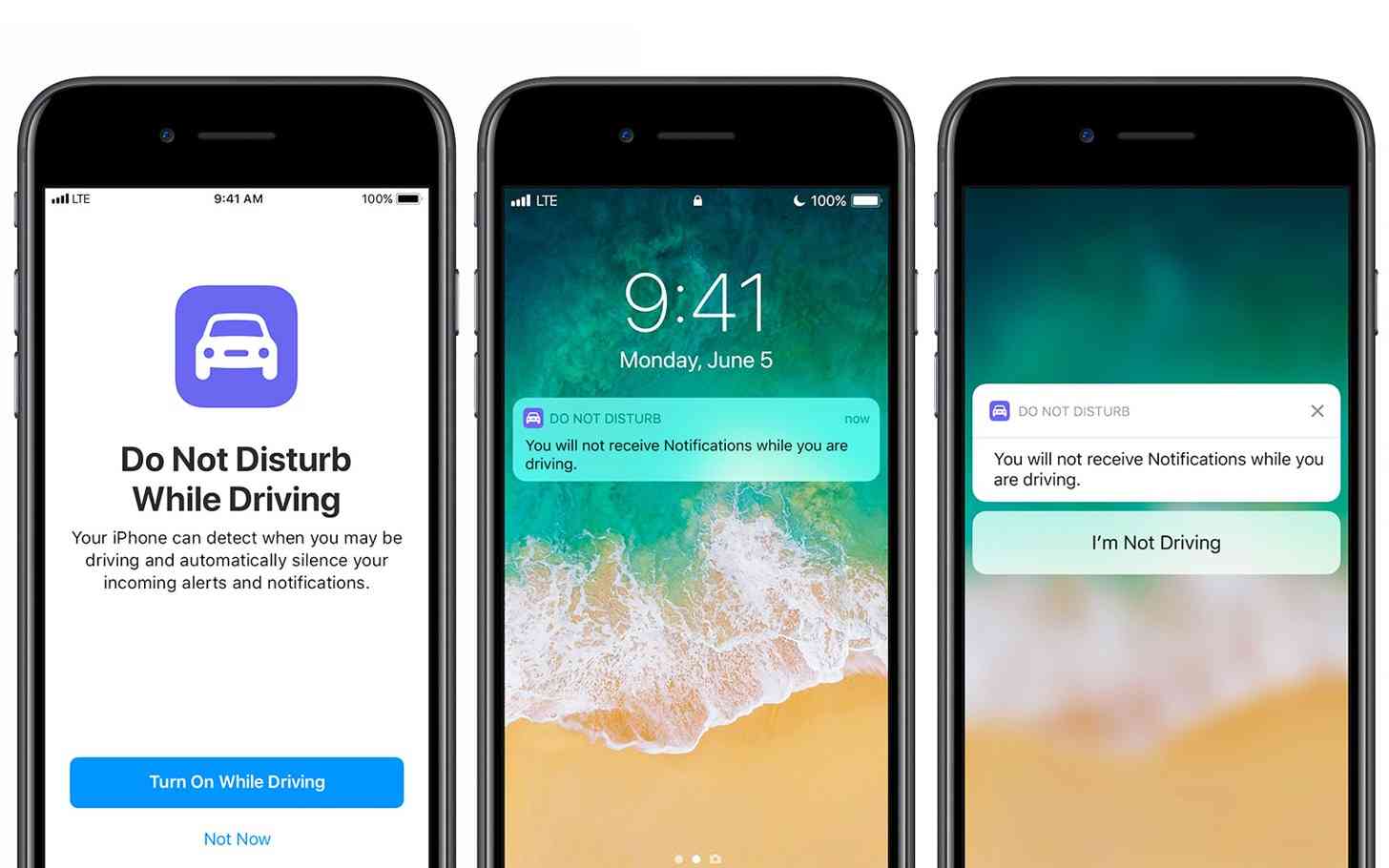
Watching WWDC on Monday, I wasn’t really sure what to expect. I knew they would give details on iOS 11, and I figured there would probably be something iPad-related. Although both of those announcements came, the one thing I wasn’t counting on was for Apple to introduce a new layer to “Do Not Disturb”: Do Not Disturb While Driving.
I have been vocal in my disdain for distracted driving. It feels like every time I drive I notice more and more people paying more attention to their phones than where they’re going, swerving ever so slightly over the double yellow lines, the only protective measure put in place to make sure that cars don’t collide head-on with one another; the other protective measure is the presumed desire not to harm ourselves and/or others. Both measures aren’t the least bit foolproof, but it’s peculiar how the latter often takes a backseat, so to speak, to whatever is going on in our smartphones.
Hands-free phone use is the only acceptable form of phone use while driving, from my perspective. A driver’s hands should be on the wheel, and their focus should be on the road ahead and their surroundings. Even picking up the phone in one hand to use one of the many assistants available is dangerous, I’ve come to realize, as I observe people attempting to multitask driving and voice dictate something, but subconsciously look at their phone to “double check” something anyway. It’s a bad habit, but expected. Studies have shown that humans process visual data better than any other type of data, so it makes sense that we may glance at our phone to make sure that text was transcribed as spoken, to make sure you’re in the correct lane, or simply as an autopiloted reaction to an unexpected vibration in the hand. Next thing you know, mere seconds have passed and you’re 100 meters from where you last paid attention. It goes without saying that a lot can happen in 100 meters, and a lot can happen in a few seconds; a lot can happen in a very short amount of time when we travel as quickly as we do in cars.
Drive Mode has long been an option in many smartphones. My earliest memory of Drive Mode was in my Samsung Instinct. It wasn’t much more than a simplified interface that still required visual and physical interaction with the device to work. That was back in 2009. 8 years later, options are better. Bluetooth-enabled cars and always-on listening have been sufficient solutions for many. On the other hand, there are still a frightening amount of people who remain unconcerned about the dangers of distracted driving with a smartphone in the hand, and although Apple’s new feature won’t completely eradicate the problem, I do think that it might help.
I admire it because it’s simple. It doesn’t give users a simpler interface to navigate. In fact, it doesn’t give users much at all. When Do Not Disturb While Driving is active, users can’t receive notifications. Should you attempt to view any missed notifications, you will only see a message that says you will not receive notifications while driving. Users can set an “away” message, letting those who text them know that they’re currently driving and will get back to them when they can. Should a message be urgent, a person can send a follow-up text that says “urgent” – then a driver will be alerted and know they should pull over to respond. Do Not Disturb While Driving still allows for the viewing of Apple Maps navigation, but will not accept any new destination entries.
It’s pretty simple, and again, not foolproof. Although Do Not Disturb While Driving activates when the iPhone is traveling at a high speed or connected to a car’s Bluetooth or AUX cable, users can indicate they’re not driving by tapping “I’m Not Driving”, which was implemented for the times that a user is a passenger rather than the driver. The feature depends on the integrity of the driver to comply, which unfortunately isn’t a wholly feasible reality. Additionally, I’m suspect there will be many instances where the “urgent” message will be abused.
Despite its drawbacks, I’m happy to see a major company like Apple work to spread the message that as great as smartphones are, they’re not always great for the road. Samsung also began taking measures earlier this year with an app called In-Traffic Reply, which seems to be rolling out slowly over several months. I think these methods work as a good compromise. Users don’t have to turn off their phone completely, have automated replies, and allow emergency communications to come through when needed. It also limits the driver enough, hopefully, to curb the habit of picking up their phone and using it while driving.